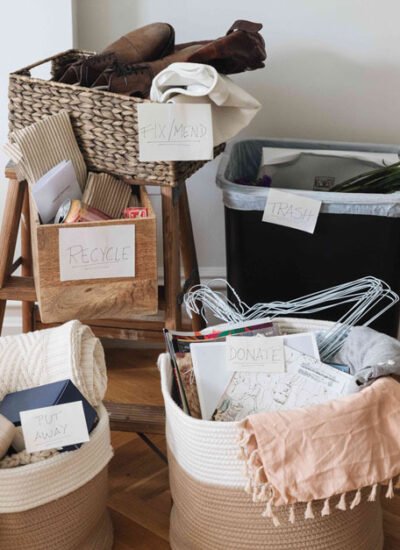Downsizing your life in a tiny house can be both liberating and challenging. As you transition to a smaller living space, it’s essential to embrace a mindset focused on simplicity and functionality. Prioritizing what truly matters in your life will make your move to a tiny house smoother and more fulfilling.
In this journey, assessing your belongings is crucial. You’ll want to evaluate each item for its usefulness and sentimental value. This process not only reduces clutter but also helps you discover what you genuinely need to enhance your living experience.
Moreover, adopting efficient storage solutions will maximize your tiny space. Utilizing multifunctional furniture and creative organization techniques allows you to maintain a comfortable lifestyle without feeling cramped. With deliberate planning and a focused approach, you can enjoy the benefits of tiny house living fully.
Strategies for Decluttering
Decluttering is essential for adapting to a tiny house lifestyle. You need to assess your belongings, let go of items no longer needed, and organize what remains efficiently. These strategies will help create a functional, minimalist space.
Assessing Your Belongings
Start by evaluating each item you own. Use the Four-Box Method: label four boxes as Keep, Donate, Sell, and Trash. Go through your items one by one, placing each in the appropriate box.
Ask yourself questions like:
- Do I use this regularly?
- Does it have sentimental value?
- Is it worth the space it occupies?
Be honest in your assessment. If an item doesn’t contribute positively to your life, it’s time to part ways.
Methods of Letting Go
Once you’ve sorted your belongings, determine how to let go of items in the Donate, Sell, and Trash boxes.
To donate, research local charities or shelters. Many organizations will accept a wide range of items, making it easy to give back.
If you choose to sell, consider platforms like eBay, Facebook Marketplace, and Craigslist. Be sure to set reasonable prices to encourage quick sales.
For items that are worn or broken, dispose of them responsibly. Check local guidelines for e-waste or hazardous materials, as proper disposal is crucial for environmental safety.
Organizing Essentials
When organizing your essential items, focus on maximizing space and accessibility. Use multi-functional furniture for storage, like ottomans that open or beds with drawers underneath.
Implement vertical storage solutions such as shelves and wall hooks to utilize vertical space. This keeps your floor area clear and creates a sense of openness.
Use clear bins for storage, allowing you to see contents easily. Label everything clearly for efficient retrieval. Establish a designated spot for every item to maintain organization and reduce clutter over time.
Maximizing Tiny House Living
In a tiny house, every square foot matters, so it’s essential to implement specific strategies that enhance functionality and comfort. You can achieve efficient use of space through innovative furniture choices, creative storage solutions, and thoughtful design techniques.
Space-Saving Solutions
To optimize your living area, consider vertical space as a valuable asset. Install shelving or cabinets that go up to the ceiling to utilize otherwise wasted areas. Pocket doors are another effective choice, as they save floor space compared to traditional swinging doors.
You might also integrate fold-out elements, such as a Murphy bed, that can free up space during the day. Utilizing multifunctional zones, like a combined living and workspace, allows you to keep your tiny house organized without sacrificing comfort.
Sell Your Old Jewelry
If you have old jewelry you no longer wear, selling it can be a great way to declutter while making some extra cash. Consider reputable options such as local jewelry buyers, pawn shops, or online marketplaces like eBay and Facebook Marketplace. For higher-value pieces, consult a professional appraiser to ensure you receive a fair price.Multipurpose Furniture
Multipurpose furniture
is essential in tiny living. Look for sofas that can convert into beds or ottomans with hidden storage.
A dining table that doubles as a desk can also enhance functionality. When selecting furniture, prioritize items that serve multiple purposes to maximize utility.
Consider customizing pieces to fit your needs, such as a bench with built-in storage or a coffee table that can expand when entertaining guests.
Creative Storage Ideas
Storage can be a challenge in a tiny house, but innovative solutions exist. Utilize under-bed storage with bins to keep items tucked away but easily accessible.
Hang hooks or pegboards on walls to store tools, kitchenware, or even artwork, keeping surfaces clear. Consider using the back of doors for additional storage, such as shoe racks or spice organizers.
Baskets and containers can stylishly sort smaller items in cabinets, creating an organized appearance while maintaining easy access.
Designing Small Spaces
Designing small spaces requires careful planning. Opt for lighter color palettes to create an illusion of spaciousness. Large windows can enhance natural light, making areas feel more open.
Mirrors strategically placed can also reflect light and give the appearance of depth. Choose furniture that complements the scale of your space; oversized items can overwhelm tiny rooms. Incorporate the classic and cozy use of teak for furniture pieces. Teak’s natural warmth and durability can add a touch of luxury while maintaining a minimalist aesthetic.
Lastly, keep decor simple and uncluttered to maintain a streamlined look.






Leave a Reply